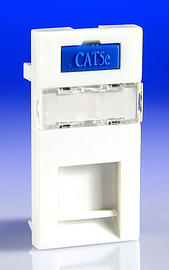I have this in the hallway;

And i have this in the livingroom;

This is beside tv box and router etc for BT. When work was done with floors I got the cable rerouted under the floors, as it was installed around doors, skirting, windows etc bt BT guy.
Now, we have a basic alarm system that I need to setup. I would like to put the main keypad in the hallway and was wondering is there anyway I can get a phone line socket of this plate in the hallway rather than have to run a long and unsightly cable to hallway back from living room!?
Hope that makes sense. Thanks in advance

And i have this in the livingroom;

This is beside tv box and router etc for BT. When work was done with floors I got the cable rerouted under the floors, as it was installed around doors, skirting, windows etc bt BT guy.
Now, we have a basic alarm system that I need to setup. I would like to put the main keypad in the hallway and was wondering is there anyway I can get a phone line socket of this plate in the hallway rather than have to run a long and unsightly cable to hallway back from living room!?
Hope that makes sense. Thanks in advance




